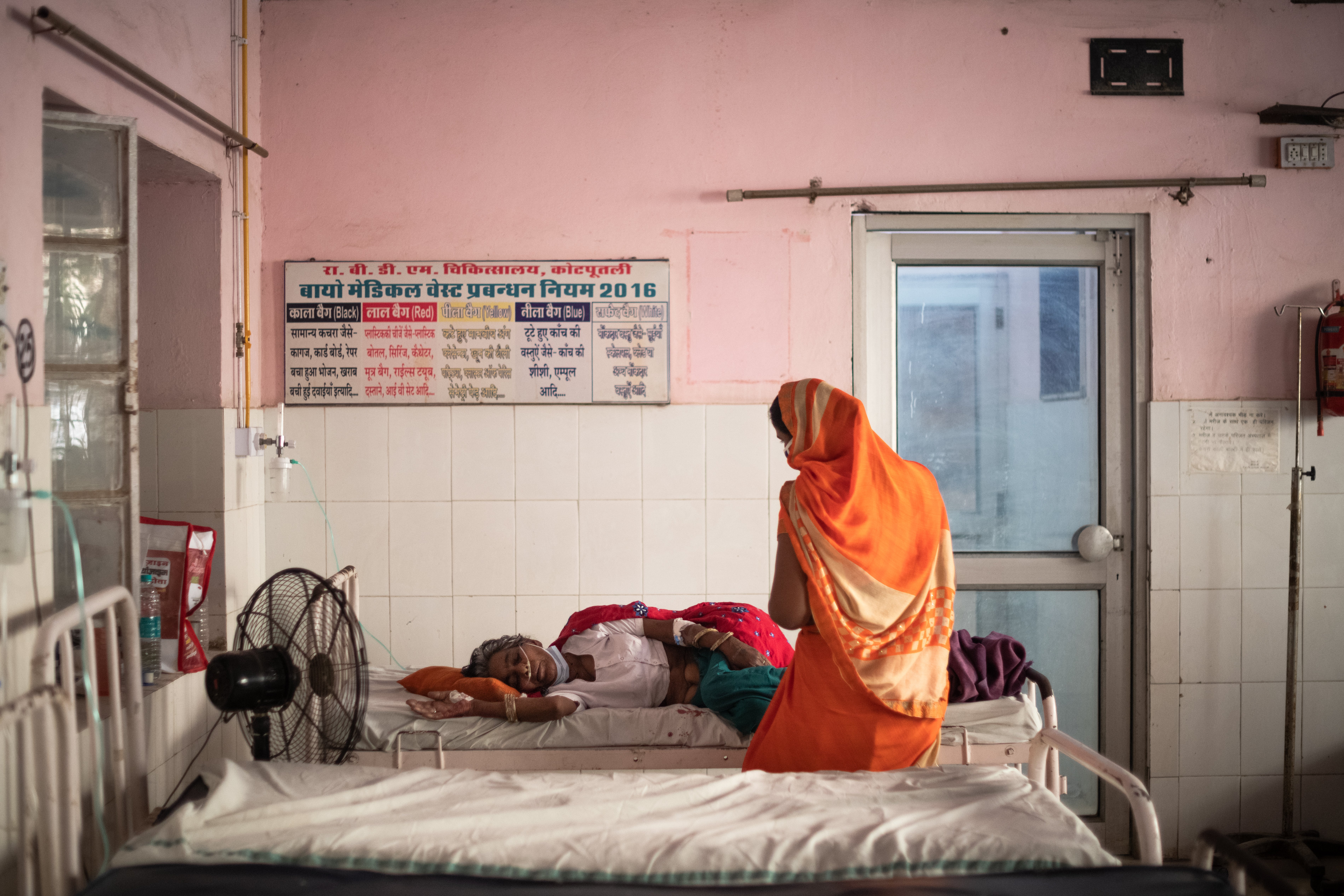The unequal distribution of oxygen around the world is one of the scandals of this pandemic
People are dying whose lives could have been saved, if they had had the fortune to be treated in a hospital in Europe or North America, write Philippe Duneton and Leith Greenslade

It’s difficult to erase from memory the images shared around the world from India’s recent Covid-19 surge – people gasping for breath, dying in crowded hospital corridors, relatives crying, queues that stretch for miles. Much of this death and chaos is the result of a lack of one precious commodity – oxygen.
You could be forgiven for thinking that this was a new problem. But it isn’t. Access to oxygen has been a systemic challenge in low- and middle-income countries for decades, resulting in pneumonia claiming the lives of 2.5 million people every year. Now Covid-19 has turned a dire situation into a crisis from Argentina to India, the Philippines to Ethiopia, Nepal to Brazil.
Oxygen isn’t a new technology, rather an essential medicine designated as such by the World Health Organisation. Unlike vaccines, research and development isn’t required to invent the products – they exist, in the form of bulk liquid supplies, generator plants, concentrators, and more. But despite oxygen – together with steroids such as dexamethasone – being the only proven treatment for Covid-19, it is simply out of reach for millions of people.
The Every Breath Counts coalition and Unitaid have been working on this issue since pre-pandemic days, bringing together partners with the aim of ending preventable deaths from childhood pneumonia by 2030. Now Covid-19 has brought fresh impetus and a renewed urgency to address the lack of access to what is a basic, essential medicine.
Governments from high-income countries have rightly put funding into access to vaccines to prevent future Covid-19 infections. But the oxygen crisis is happening now, in hospitals and remote health centres from Delhi to Manaus, Manila to Kabul. People are dying whose lives could have been saved, if they had had the fortune to be treated in a hospital in Europe or North America. But instead, the pipes and cylinders are empty and patients are turned away by health centres that are overrun, oxygen supplies having finished hours earlier.
While many higher-income countries prepare to ease lockdown restrictions, countries such as Colombia, South Africa, Afghanistan, Cambodia, Angola, Uganda, and Haiti are seeing concerning increases in cases and pressure on oxygen supplies. Recent research published in The Lancet indicated that half of Covid-19 patients who died in ICUs across 10 countries in Africa did not receive any oxygen, laying bare the inequities of the current situation.
So what needs to happen now? The global health community has a plan, in the shape of the Covid-19 Oxygen Emergency Taskforce. Launched in February under the ACT-Accelerator initiative, and led by Unitaid and Wellcome, it is working to get oxygen to where it’s needed most, help low and middle-income countries secure funding to buy the oxygen equipment they need, and crucially, negotiate with industry to make the market work better for the poorest countries.
The global liquid oxygen industry is dominated by six companies. Lack of competition, coupled with the fact that medical oxygen has historically represented a small percentage of industrial gas sector revenues, has resulted in higher prices and inequitable access for many low- and middle-income countries. The taskforce is working to bring industry to the table and negotiate fairer pricing and access commitments on a sustainable basis. At the same time, there will be a need to continue providing the kind of emergency support needed in India and Nepal, as Covid-19 resurges in populations with low vaccine coverage.
None of this vital work can be done without substantial investment in oxygen access. An immediate injection of $400m (£283m) is required by the Covid-19 Oxygen Emergency Taskforce to finance this market-shaping work with industry. Overcoming entrenched barriers in the medical oxygen market through such an investment will enable and amplify the crucial work of partners such as WHO, the Global Fund, Unicef and The World Bank in scaling oxygen access in those countries that need it most, enabling critically-ill Covid-19 patients to survive and prevent health systems from collapse.
G7 leaders have the opportunity to change the course of history. By acting now and investing in oxygen access – one of the treatments that saved the life of UK prime minister and G7 host Boris Johnson – they will not only save lives from Covid-19, but secure the future of oxygen access for babies, women in childbirth, trauma patients and those living with chronic lung conditions.
“Build back better” is often cited as the vision for post-pandemic recovery – investing in sustainable access to oxygen for everyone could transform this vision into reality.
Dr Philippe Duneton is executive director of Unitaid
Leith Greenslade is coordinator of the Every Breath Counts coalition
Join our commenting forum
Join thought-provoking conversations, follow other Independent readers and see their replies
Comments
Bookmark popover
Removed from bookmarks